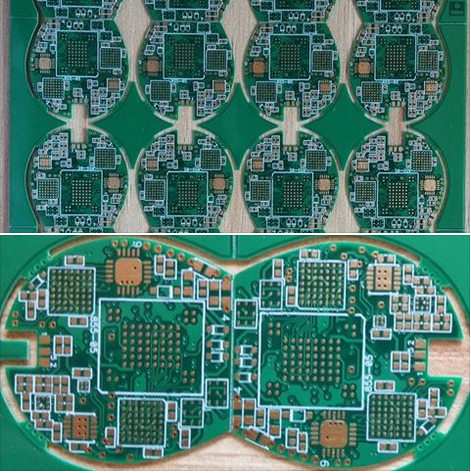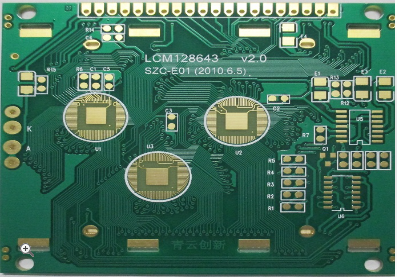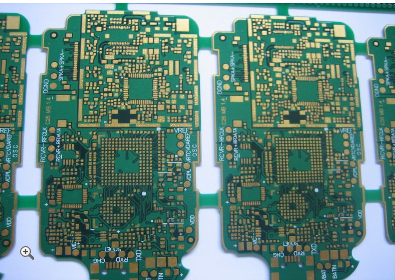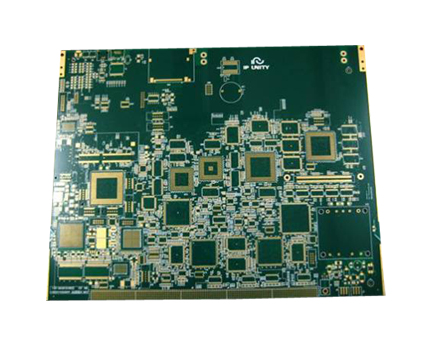-
 Agriculture
Agriculture
-
 Health-Care
Health-Care
-
 Environment
Environment
-
 Construction-Real-Estate
Construction-Real-Estate
-
 Tools-Hardware
Tools-Hardware
-
 Home-Garden
Home-Garden
-
 Furniture
Furniture
-
 Luggage-Bags-Cases
Luggage-Bags-Cases
-
 Medical-devices-Supplies
Medical-devices-Supplies
-
 Gifts-Crafts
Gifts-Crafts
-
 Sports-Entertainment
Sports-Entertainment
-
 Food-Beverage
Food-Beverage
-
 Vehicles-Transportation
Vehicles-Transportation
-
 Power-Transmission
Power-Transmission
-
 Material-Handling
Material-Handling
-
 Renewable-Energy
Renewable-Energy
-
 Safety
Safety
-
 Testing-Instrument-Equipment
Testing-Instrument-Equipment
-
 Construction-Building-Machinery
Construction-Building-Machinery
-
 Pet-Supplies
Pet-Supplies
-
 Personal-Care-Household-Cleaning
Personal-Care-Household-Cleaning
-
 Vehicle-Accessories-Electronics-Tools
Vehicle-Accessories-Electronics-Tools
-
 School-Office-Supplies
School-Office-Supplies
-
 Packaging-Printing
Packaging-Printing
-
 Mother-Kids-Toys
Mother-Kids-Toys
-
 Business-Services
Business-Services
-
 Commercial-Equipment-Machinery
Commercial-Equipment-Machinery
-
 Apparel-Accessories
Apparel-Accessories
-
 Security
Security
-
 Shoes-Accessories
Shoes-Accessories
-
 Vehicle-Parts-Accessories
Vehicle-Parts-Accessories
-
 Jewelry-Eyewear-Watches-Accessories
Jewelry-Eyewear-Watches-Accessories
-
 Lights-Lighting
Lights-Lighting
-
 Fabric-Textile-Raw-Material
Fabric-Textile-Raw-Material
-
 Fabrication-Services
Fabrication-Services
-
 Industrial-Machinery
Industrial-Machinery
-
 Consumer-Electronics
Consumer-Electronics
-
 Electrical-Equipment-Supplies
Electrical-Equipment-Supplies
-
 Electronic-Components-Accessories-Telecommunications
Electronic-Components-Accessories-Telecommunications
-
 Home-Appliances
Home-Appliances
-
 Beauty
Beauty
-
 Chemicals
Chemicals
-
 Rubber-Plastics
Rubber-Plastics
-
 Metals-Alloys
Metals-Alloys
- Masonry Materials
- Curtain Walls & Accessories
- Earthwork Products
- Fireproofing Materials
- Heat Insulation Materials
- Plastic Building Materials
- Building Boards
- Soundproofing Materials
- Timber
- Waterproofing Materials
- Balustrades & Handrails
- Bathroom & Kitchen
- Flooring & Accessories
- Tiles & Accessories
- Door, Window & Accessories
- Fireplaces & Stoves
- Floor Heating Systems & Parts
- Stairs & Stair Parts
- Ceilings
- Elevators & Escalators
- Stone
- Countertops, Vanity Tops & Table Tops
- Mosaics
- Metal Building Materials
- Multifunctional Materials
- Ladders & Scaffoldings
- Mouldings
- Corner Guards
- Decorative Films
- Formwork
- Building & Industrial Glass
- Other Construction & Real Estate
- Wallpapers/Wall panels
- HVAC System & Parts
- Outdoor Facilities
- Prefabricated Buildings
- Festive & Party Supplies
- Bathroom Products
- Household Sundries
- Rain Gear
- Garden Supplies
- Household Cleaning Tools & Accessories
- Lighters & Smoking Accessories
- Home Storage & Organization
- Household Scales
- Smart Home Improvement
- Home Textiles
- Kitchenware
- Drinkware & Accessories
- Dinnerware, Coffee & Wine
- Home Decor
- Golf
- Fitness & Body Building
- Amusement Park Facilities
- Billiards, Board Game,Coin Operated Games
- Musical Instruments
- Outdoor Affordable Luxury Sports
- Camping & Hiking
- Fishing
- Sports Safety&Rehabilitation
- Ball Sports Equipments
- Water Sports
- Winter Sports
- Luxury Travel Equipments
- Sports Shoes, Bags & Accessories
- Cycling
- Other Sports & Entertainment Products
- Artificial Grass&Sports Flooring&Sports Court Equipment
- Scooters
- Food Ingredients
- Honey & Honey Products
- Snacks
- Nuts & Kernels
- Seafood
- Plant & Animal Oil
- Beverages
- Fruit & Vegetable Products
- Frog & Escargot
- Bean Products
- Egg Products
- Dairy Products
- Seasonings & Condiments
- Canned Food
- Instant Food
- Baked Goods
- Other Food & Beverage
- Meat & Poultry
- Confectionery
- Grain Products
- Feminie Care
- Hair Care & Styling
- Body Care
- Hands & Feet Care
- Hygiene Products
- Men's Grooming
- Laundry Cleaning Supplies
- Travel Size & Gift Sets
- Room Deodorizers
- Other Personal Care Products
- Pest Control Products
- Special Household Cleaning
- Floor Cleaning
- Kitchen & Bathroom Cleaning
- Oral Care
- Bath Supplies
- Yellow Pages
- Correction Supplies
- Office Binding Supplies
- Office Cutting Supplies
- Board Erasers
- Office Adhesives & Tapes
- Education Supplies
- Pencil Cases & Bags
- Notebooks & Writing Pads
- File Folder Accessories
- Calendars
- Writing Accessories
- Commercial Office Supplies
- Pencil Sharpeners
- Pens
- Letter Pad/Paper
- Paper Envelopes
- Desk Organizers
- Pencils
- Markers & Highlighters
- Filing Products
- Art Supplies
- Easels
- Badge Holder & Accessories
- Office Paper
- Printer Supplies
- Book Covers
- Other Office & School Supplies
- Stationery Set
- Boards
- Clipboards
- Stamps
- Drafting Supplies
- Stencils
- Electronic Dictionary
- Books
- Map
- Magazines
- Calculators
- Baby & Toddler Toys
- Educational Toys
- Classic Toys
- Dress Up & Pretend Play
- Toy Vehicle
- Stuffed Animals & Plush Toys
- Outdoor Toys & Structures
- Balloons & Accessories
- Baby Food
- Children's Clothing
- Baby Supplies & Products
- Maternity Clothes
- Kids Shoes
- Baby Care
- Novelty & Gag Toys
- Dolls & Accessories
- Puzzle & Games
- Blocks & Model Building Toys
- Toddler Clothing
- Baby Clothing
- Kids' Luggage & Bags
- Arts, Crafts & DIY Toys
- Action & Toy Figures
- Baby Appliances
- Hobbies & Models
- Remote Control Toys
- Promotional Toys
- Pregnancy & Maternity
- Hygiene Products
- Kid's Textile&Bedding
- Novelty & Special Use
- Toy Weapons
- Baby Gifts
- Baby Storage & Organization
- Auto Drive Systems
- ATV/UTV Parts & Accessories
- Marine Parts & Accessories
- Other Auto Parts
- Trailer Parts & Accessories
- Auto Transmission Systems
- Train Parts & Accessories
- Universal Parts
- Railway Parts & Accessories
- Auto Brake Systems
- Aviation Parts & Accessories
- Truck Parts & Accessories
- Auto Suspension Systems
- Auto Lighting Systems
- New Energy Vehicle Parts & Accessories
- Auto Steering Systems
- Wheels, Tires & Accessories
- Bus Parts & Accessories
- Auto Performance Parts
- Cooling System
- Go-Kart & Kart Racer Parts & Accessories
- Air Conditioning Systems
- Heavy Duty Vehicle Parts & Accessories
- Auto Electrical Systems
- Auto Body Systems
- Auto Engine Systems
- Container Parts & Accessories
- Motorcycle Parts & Accessories
- Refrigeration & Heat Exchange Equipment
- Machine Tool Equipment
- Food & Beverage Machinery
- Agricultural Machinery & Equipment
- Apparel & Textile Machinery
- Chemical Machinery
- Packaging Machines
- Paper Production Machinery
- Plastic & Rubber Processing Machinery
- Industrial Robots
- Electronic Products Machinery
- Metal & Metallurgy Machinery
- Woodworking Machinery
- Home Product Manufacturing Machinery
- Machinery Accessories
- Environmental Machinery
- Machinery Service
- Electrical Equipment Manufacturing Machinery
- Industrial Compressors & Parts
- Tobacco & Cigarette Machinery
- Production Line
- Used Industrial Machinery
- Electronics Production Machinery
- Other Machinery & Industrial Equipment
- Camera, Photo & Accessories
- Portable Audio, Video & Accessories
- Television, Home Audio, Video & Accessories
- Video Games & Accessories
- Mobile Phone & Accessories
- Electronic Publications
- Earphone & Headphone & Accessories
- Speakers & Accessories
- Smart Electronics
- TV Receivers & Accessories
- Mobile Phone & Computer Repair Parts
- Chargers, Batteries & Power Supplies
- Used Electronics
- VR, AR, MR Hardware & Software
- Projectors & Presentation Equipments
- Other Consumer Electronics
- Cables & Commonly Used Accessories
- Computer Hardware & Software
- Displays, Signage and Optoelectronics
- Discrete Semiconductors
- Wireless & IoT Module and Products
- Telecommunications
- Connectors, Terminals & Accessories
- Development Boards, Electronic Modules and Kits
- Circuit Protection
- Sensors
- Isolators
- Audio Components and Products
- Integrated Circuits
- Power Supplies
- Relays
- RF, Microwave and RFID
- Electronic Accessories & Supplies
- Passive Components
- PCB & PCBA
- Air Quality Appliances
- Home Appliance Parts
- Heating & Cooling Appliances
- Small Kitchen Appliances
- Laundry Appliances
- Water Heaters
- Water Treatment Appliances
- Refrigerators & Freezers
- Personal Care & Beauty Appliances
- Major Kitchen Appliances
- Cleaning Appliances
- Second-hand Appliances
- Smart Home Appliances
- Other Home Appliances
- Energy Chemicals
- Inorganic Chemicals
- Basic Organic Chemicals
- Agrochemicals
- Admixture & Additives
- Catalysts & Chemical Auxiliary Agents
- Pigments & Dyestuff
- Coating & Paint
- Daily Chemicals
- Polymer
- Organic Intermediate
- Adhesives & Sealants
- Chemical Waste
- Biological Chemical Products
- Surface Treatment Chemicals
- Painting & Coating
- Chemical Reagents
- Flavor & Fragrance
- Non-Explosive Demolition Agents
- Other Chemicals
- Custom Chemical Services
Optimizing Deep Hole Accuracy in High Precision Circuit Board PCB Manufacturing
In the rapidly evolving world of electronics, high precision circuit board (PCB) manufacturing plays a pivotal role in ensuring the performance and reliability of modern devices. One of the most critical challenges in this field is optimizing deep hole accuracy, as even the slightest deviation can lead to significant functional issues. Deep holes, often used for vias and through-holes, must meet stringent tolerances to ensure proper electrical connectivity and mechanical stability. This article delves into the intricacies of optimizing deep hole accuracy, exploring advanced techniques, materials, and technologies that are reshaping the PCB manufacturing landscape.
The Importance of Deep Hole Accuracy in PCB Manufacturing
Deep hole accuracy is paramount in high precision PCB manufacturing because it directly impacts the board's electrical performance and structural integrity. In multi-layer PCBs, deep holes serve as conduits for electrical signals between layers, and any misalignment or inconsistency can lead to signal loss, cross-talk, or even complete circuit failure. Moreover, as PCBs become increasingly miniaturized, the demand for smaller and deeper holes with tighter tolerances has grown exponentially.
Beyond electrical performance, deep hole accuracy also affects the mechanical robustness of the PCB. Poorly drilled holes can weaken the board, making it susceptible to cracking or delamination during assembly or operation. This is particularly critical in applications such as aerospace, medical devices, and automotive electronics, where reliability is non-negotiable. Thus, optimizing deep hole accuracy is not just a technical challenge but a necessity for achieving high-quality PCB manufacturing.
Advanced Drilling Techniques for Precision Deep Holes
Traditional mechanical drilling methods, while effective for standard applications, often fall short when it comes to high precision deep holes. To address this, manufacturers are turning to advanced techniques such as laser drilling and controlled-depth drilling. Laser drilling, for instance, offers unparalleled precision by using focused laser beams to create holes with diameters as small as a few micrometers. This method is especially useful for microvias and high-density interconnect (HDI) PCBs.
Another promising approach is controlled-depth drilling, which combines mechanical drilling with real-time monitoring systems to ensure consistent hole depth. By integrating sensors and feedback mechanisms, manufacturers can adjust drilling parameters on the fly, minimizing deviations and improving accuracy. These advanced techniques not only enhance precision but also reduce the risk of tool wear and material damage, leading to higher yields and lower production costs.
Material Considerations for Optimal Deep Hole Quality
The choice of materials significantly influences deep hole accuracy in PCB manufacturing. For instance, the substrate material must exhibit excellent thermal and mechanical properties to withstand the drilling process without deforming or delaminating. High-performance materials like polyimide and PTFE are often preferred for their stability and low thermal expansion coefficients.
Additionally, the quality of the copper plating inside the holes plays a crucial role in ensuring electrical conductivity and mechanical strength. Electroless copper plating and direct metallization techniques are commonly used to achieve uniform plating thickness, even in deep holes. By selecting the right materials and plating methods, manufacturers can enhance hole quality and reliability, meeting the stringent demands of modern electronics.
The Role of Automation and AI in Deep Hole Optimization
Automation and artificial intelligence (AI) are revolutionizing PCB manufacturing by enabling real-time monitoring and adaptive control of drilling processes. Automated drilling systems equipped with AI algorithms can analyze vast amounts of data to identify patterns and predict potential issues before they occur. This proactive approach minimizes errors and ensures consistent hole quality across large production runs.
Furthermore, machine learning models can optimize drilling parameters such as speed, feed rate, and spindle rotation based on material properties and hole specifications. By continuously learning from past operations, these systems can fine-tune their performance, achieving unprecedented levels of accuracy and efficiency. The integration of automation and AI not only enhances deep hole accuracy but also reduces production time and waste, making it a game-changer for high precision PCB manufacturing.
Quality Control and Testing for Deep Hole Accuracy
Ensuring deep hole accuracy requires rigorous quality control and testing protocols. Non-destructive testing methods like X-ray inspection and automated optical inspection (AOI) are widely used to verify hole dimensions, alignment, and plating quality. X-ray imaging, in particular, allows manufacturers to inspect internal features without damaging the PCB, making it ideal for high precision applications.
In addition to advanced imaging techniques, electrical testing is employed to assess the conductivity and integrity of the holes. Flying probe testers and boundary scan testing can detect open circuits, short circuits, and other defects that may compromise performance. By combining these testing methods, manufacturers can identify and rectify issues early in the production process, ensuring that only flawless PCBs reach the end user.
In conclusion, optimizing deep hole accuracy in high precision PCB manufacturing is a multifaceted challenge that demands cutting-edge techniques, materials, and technologies. From advanced drilling methods to AI-driven automation and rigorous quality control, every aspect plays a vital role in achieving the desired precision and reliability. As the electronics industry continues to push the boundaries of miniaturization and performance, the importance of deep hole accuracy will only grow, driving further innovation in this critical field.
REPORT































































































































































































































































































































































































































































































































































































